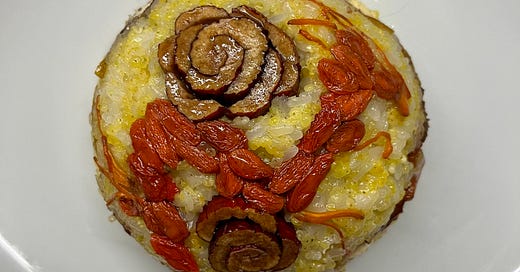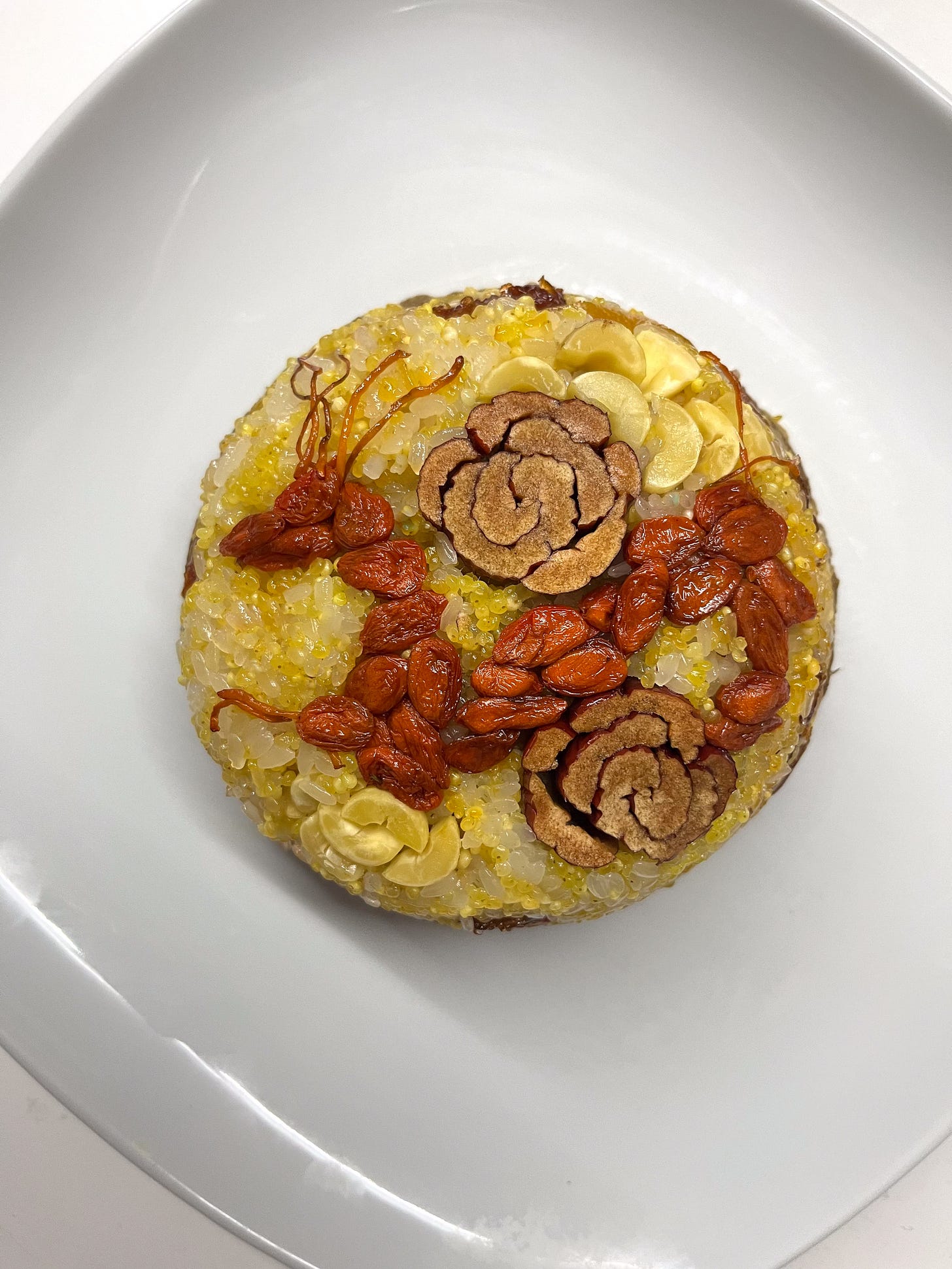I made babaofan three days in a row, and each time, my windows fogged up with condensation, it was so cold outside. The kitchen felt like its own sauna, warm and fragrant with rice. Extra incentive for steaming food in this weather.
Babaofan 八宝饭 or “eight treasures rice” is a sticky rice pudding studded with gorgeous little treasures of candied fruits, nuts and seeds, steamed until the glutinous rice grains turn translucent and cling to your spoon with a huggy stickiness. It’s comparable to European fruitcakes like stollen, plum pudding and panettone, as it’s also rich with dried fruits and enjoyed for the holiday. But there’s no booze in this, since it doesn’t need to be preserved for weeks. Traditionally, you’d cook and present a big bowl on the table for Chinese New Year.
Possible Treasures

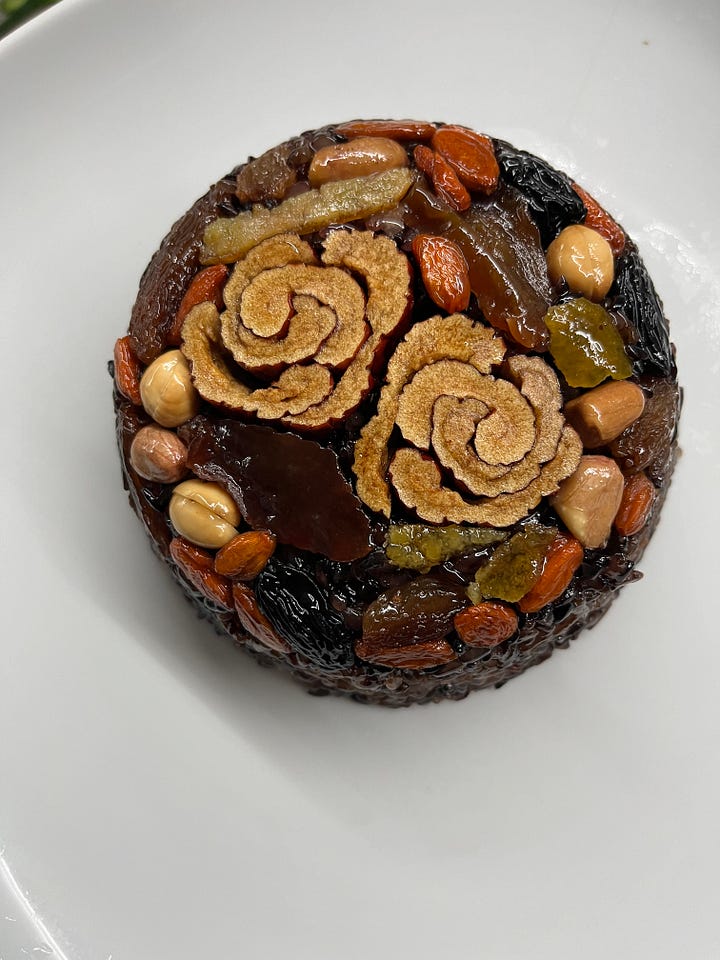
Something starchy and sweet, in a hidden filling:
• Sweetened red bean paste 红豆沙
• Sweetened lotus seed paste (use canned, or soak/steam the dried seeds until soft) 莲蓉
• Sweet potato, purple yam (ube), or taro paste 红薯、芋头泥
• Mashed pumpkin or kabocha squash 南瓜泥
• Black sesame paste 黑芝麻馅
• Chestnut paste (buy pre-cooked chestnuts, or steam until soft) 栗蓉


Nuts and seeds, for richness:
• Shelled pine nuts
• Pumpkin seeds
• Almonds
• Cashews
• Cooked or roasted peanuts
• Lotus seeds, boiled or steamed in advance
• Shelled watermelon seeds
• Salted egg yolk
• Shredded coconut

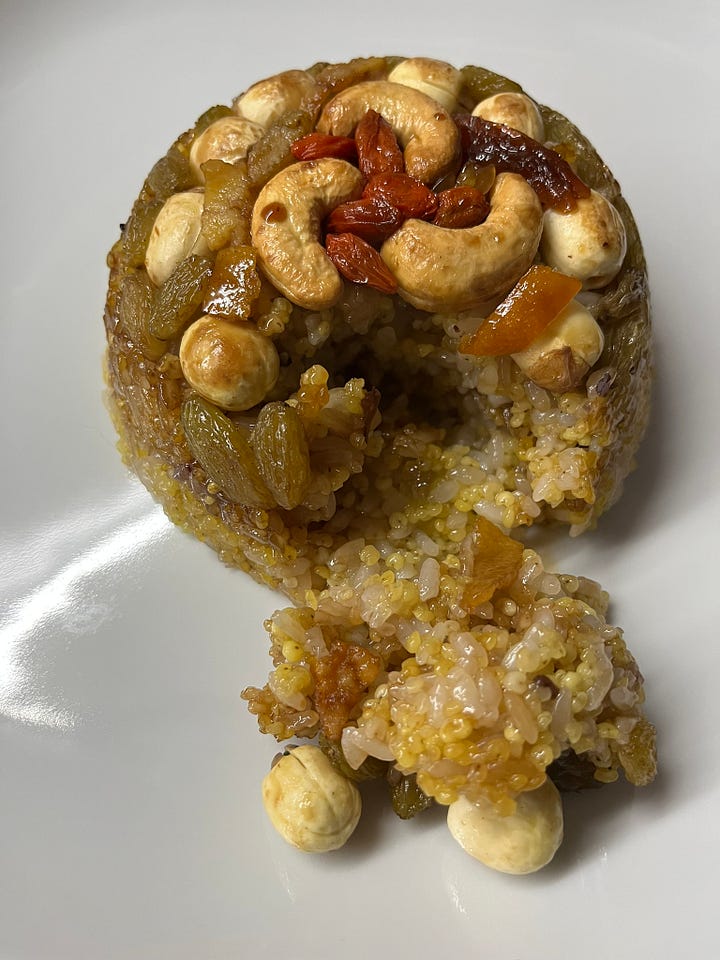
Dried and candied fruit, for sweetness:
• Pitted red dates
• Goji berries
• Candied dates (蜜枣, mizao, a good substitute for this is medjool date)
• Sultana raisins, red or golden seedless raisins, or dried currants
• Candied plums 李梅
• Candied red and green threads (红丝、绿丝used for making mooncakes)
• Candied hawthorne (山楂, shanzha)
• Dried mango or pineapple, cut into small cubes
• Candied citrus peel (陈皮, chenpi)
At Olé 超市 yesterday, everyone was buying nian huo, new year's goods, a category of shelf-stable and travel friendly gifts that people take back to their hometown for parents or relatives over the extended holiday reunion. They range from the inexpensive to luxurious— boxes of candied and dried fruits, nuts and seeds like caramel-coated black watermelon seeds and five-spice sunflower seeds for cracking to jars of cashews, pine nuts and pistachios, snack packs of fried dough twists and sticky rice confections to puffed grain and extruded sweets like shaqima. Beyond local specialties, I spotted all kinds of imports: gold-embossed boxes of individually wrapped durian, cherries, pearly naiyou strawberries from Japan, European chocolate, chiffon roll cakes, imported wine, oranges.
There was also a lot of babaofan, both sold in supermarkets and online.
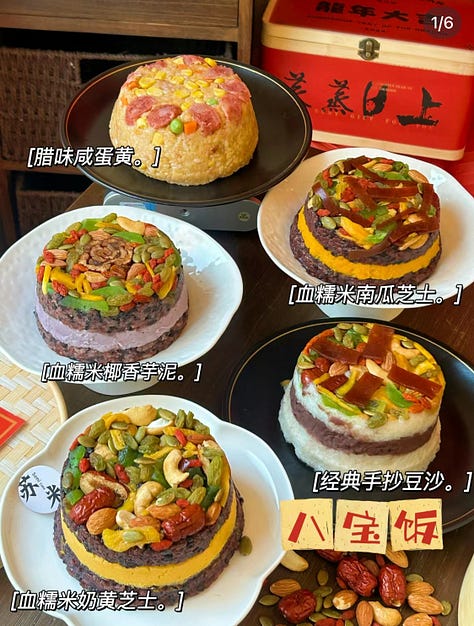


Babaofan (eight treasure rice) is a part of the Chinese New Year celebration for several reasons.
It’s round, signifying tuanyuan or gathering.
Eight is a lucky number, as it sounds similar to fa, to make a fortune. The more fruits and nuts and other treasures you can get in there, the better.
It’s steamed and sweet, both symbolizing 蒸蒸日上, “becoming more prosperous with every day, and 甜蜜吉祥, “sweet and auspicious.”
Like eight treasure porridge, babaofan utilizes the dried and candied fruits, grains and nuts that were available in the dead of winter when fresh ingredients were scarce. Traditionally it was fortified with pork lard for extra richness and flavor,. In Chinese medicine, the combination of wholesome grains, nuts, dark beans, and dried fruit are considered strengthening and building for blood and qi energy (补血、补气、健脑、安神).
You can buy babaofan in supermarkets and online now, but most of the storebought babaofan brands contain lard, and truthfully, mass-produced ones aren’t all that special. I wanted to make my own at home to play around with a few different grains and designs.
The grains
I tested combinations of white short-grain glutinous rice with ‘blood’ glutinous rice (血糯米) and glutinous Dongbei millet (黄米), and found the best proportion to be 50/50. The white rice is sticker and holds the pudding together, but the other grains add color and flavor, as well as more interesting textures.

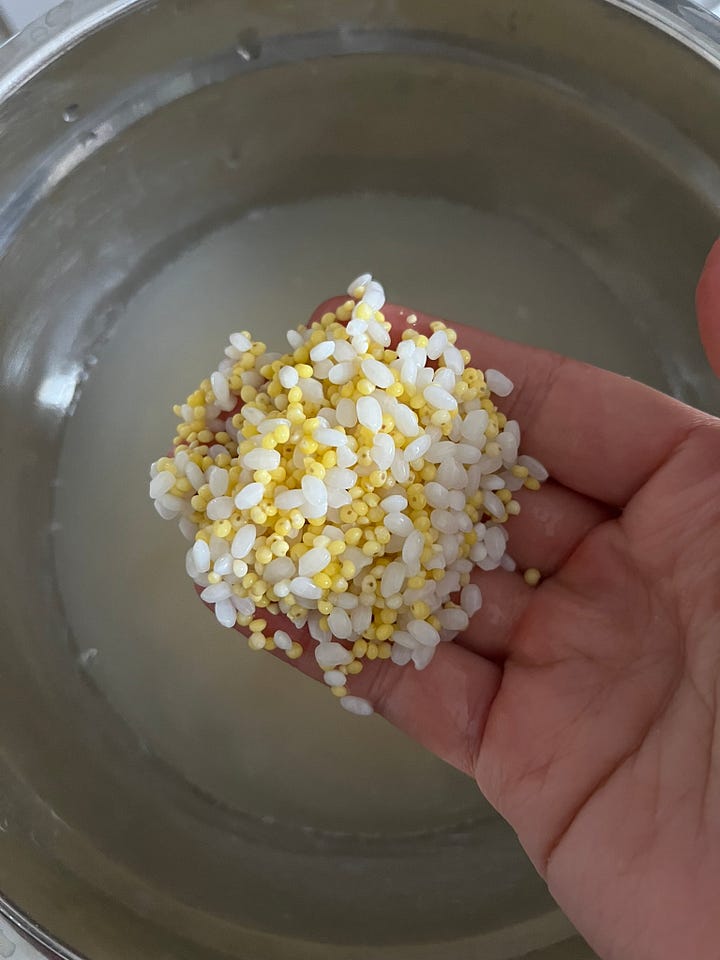
Soaking
Soaking allows the rice to absorb more water— not only does this shorten the cooking time, the rice will cook more evenly, achieving the necessary stickiness in half the time.
Some recipes suggest 12-16 hours of soaking, but I usually soak overnight. 4 hours is the minimum. Black and purple glutinous rice needs the most soaking and the longest cooking time, and will always be a little chewier than white glutinous rice.
Pre-cooking the rice
From my research, there were three traditional ways to prepare babaofan.
Cook the soaked rice directly in the bowl with a judicious amount of water, layered with sugar and the dried fruits and nuts. Steam and hope the rice cooks all the way through. This is easiest, but unpredictable: my rice remained hard in the center, while the outside was too soft, and you have to steam the pudding for over an hour.
Parboil the rice like pasta for 7-8 minutes until the grains are mostly cooked, then drain in a strainer. Mix with the sugar and lard, layer into the bowl with the nuts and fruit and steam until fully cooked. I don’t have a rice cooker, so I thought this would be easiest, but the result wasn’t as fragrant, as a lot of the rice starch and flavor escaped in the boiled water.
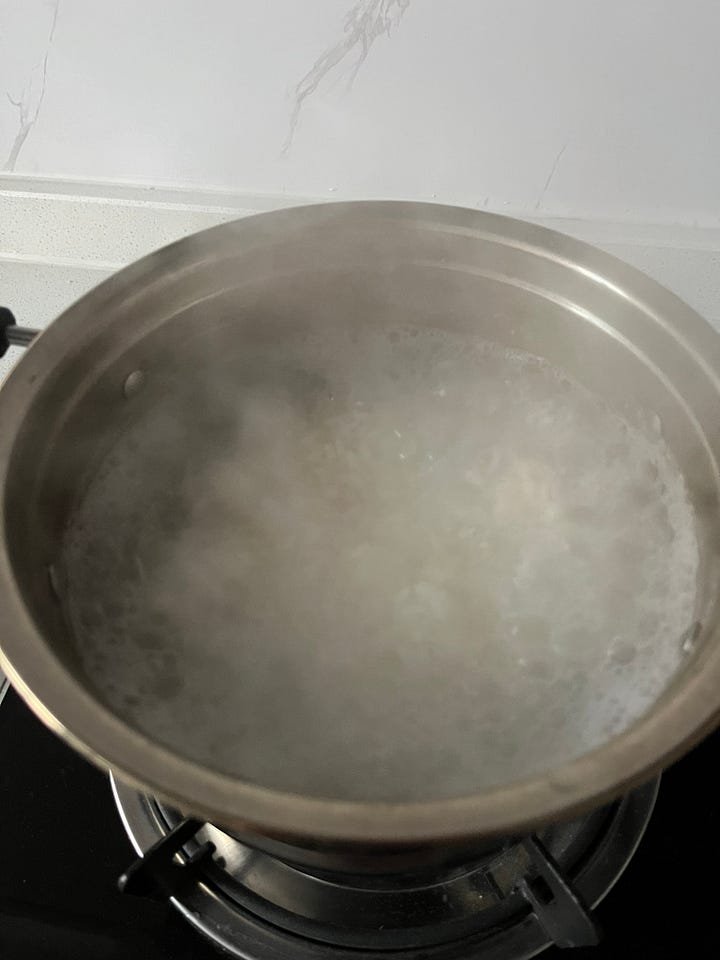

Fully cook the rice in a steamer, rice cooker, or electric pressure cooker like you would make a pot of rice, until the grains are soft but still slightly chewy. Mix with the sugar and lard, layer into the bowl with the nuts and fruit and steam for about 30 minutes. This is the easiest to control and the method I saw that had the most success.

The bottom layer of fruits/nuts is the most essential, as it’ll show up on the top when you flip the bowl. You want to press about 100g of cooked rice firmly on top to set the pattern, before adding the coil of red bean paste or taro filling. You can use more dried fruits if you don’t have a filling.
My three favorites:

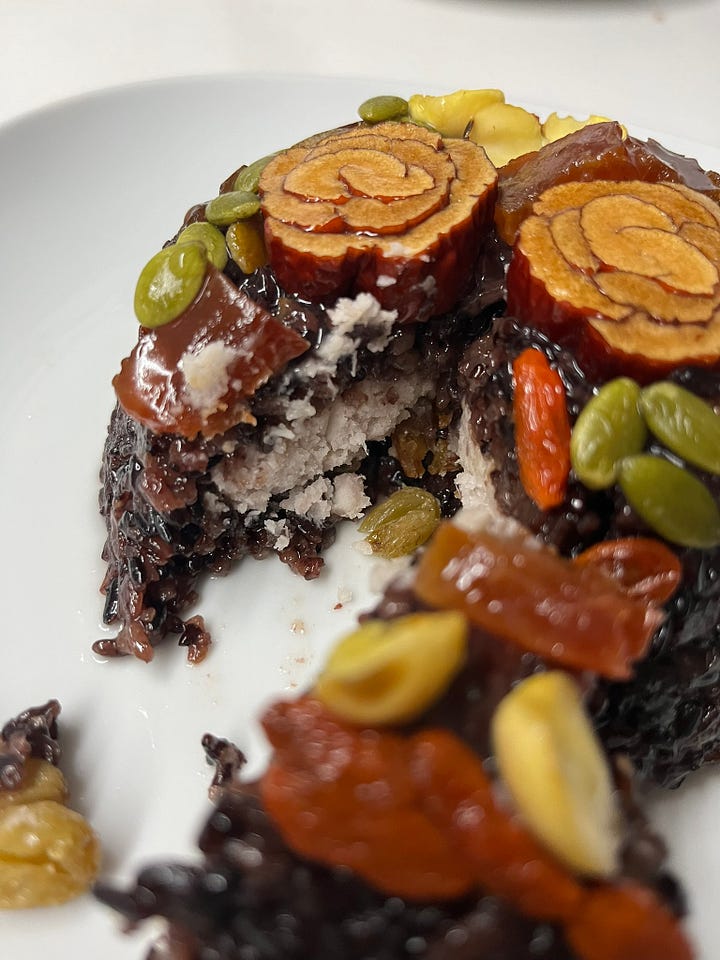
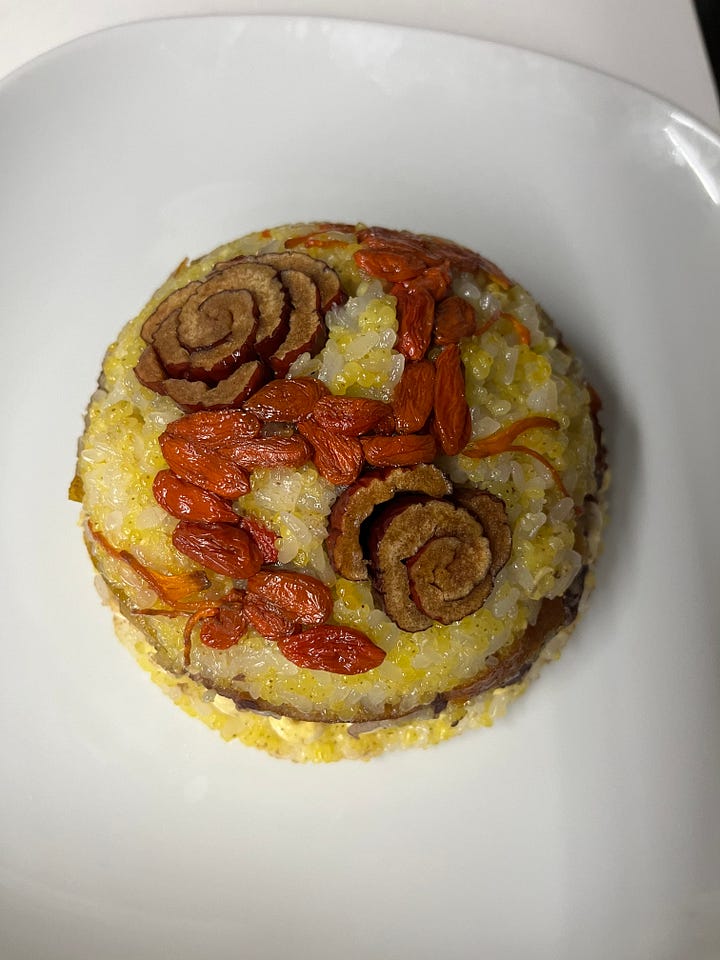


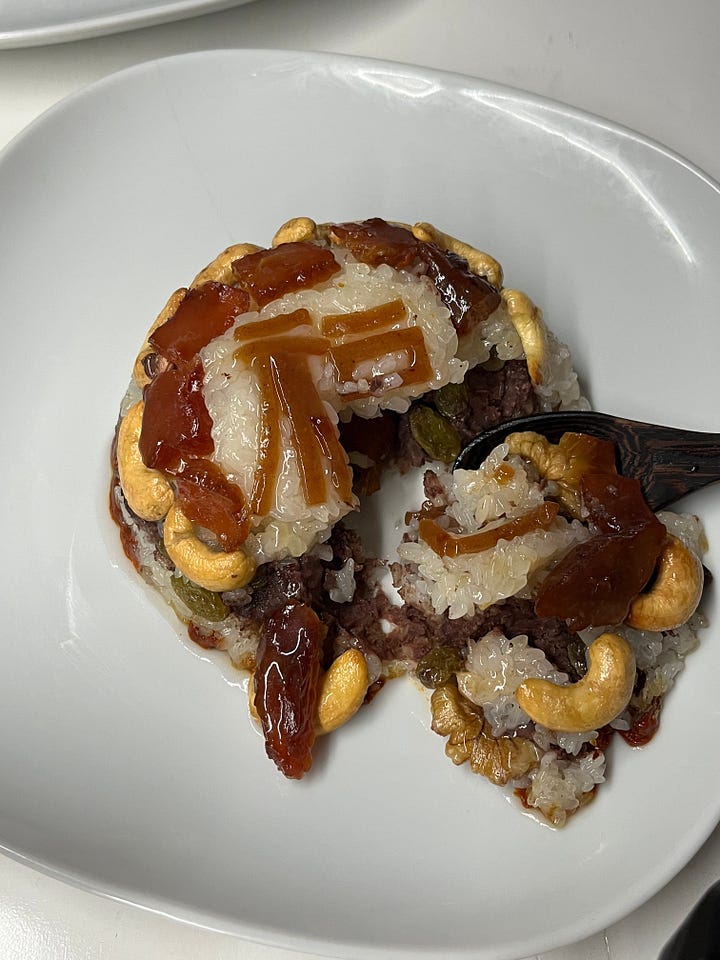
I’ll be sharing a video on Instagram in the next few days showing how to cut the date flowers, dragon, fu, etc. and assemble the layers, as it’s easier to show the process in a video, so stay tuned for that.
The Recipe
Yield: Each serving fits a 4.5inch rice bowl and is enough for 2-3 people. Make two if you want to serve 4-6 people.
Ingredients:


